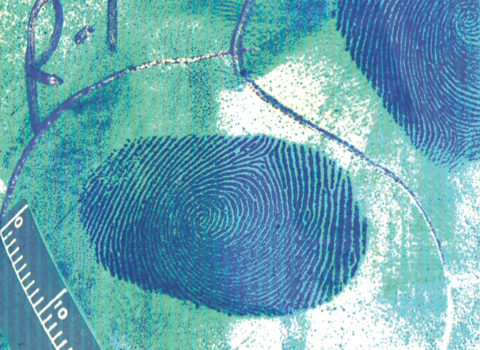Summary
This Working Group assessed the effects of human factors on forensic latent print analysis and recommended ways to reduce the likelihood and consequences of human error at various stages in the interpretation of latent print evidence. In February 2012, we published Latent Print Examination and Human Factors: Improving the Practice through a Systems Approach.
Description

Fingerprint analysis is critical to the success of the nation's criminal justice system. In fact, fingerprints left at a crime scene — referred to as latent prints — are the most common type of forensic science evidence and have been used in criminal investigations for more than 100 years.
The examination of fingerprint evidence consists of a series of steps involving the comparison of latent print to a known print (called an 'exemplar'). During this step-by-step matching process, latent print examiners must reach correct conclusions; they are also expected to produce records of the examination and, in some cases, present their conclusions — and the reasoning behind them — in court.
In recent years, the accuracy of latent print identification has been the subject of increased scrutiny, including from the National Academy of Sciences in their 2009 report, Strengthening Forensic Science in the United States: A Path Forward (pdf, 350 pages). To help address this issue, the National Institute of Justice and the U.S. National Institute of Standards and Technology (NIST) convened an expert working group to do a scientific assessment of the effects of human factors on forensic latent print analysis and to develop recommendations to reduce the risk of error.
The working group addressed issues ranging from the acquisition of impressions of friction ridge skin to courtroom testimony, and from laboratory design and equipment to emerging methods for associating latent prints with exemplars. In addition to a comprehensive discussion of how human factors relate to all aspects of latent print examinations — including communicating conclusions through reports and testimony — the report offers specific recommendations to improve the understanding and management of human-factors issues in fingerprint analysis.
Authors:
Melissa Taylor, David H. Kaye, Thomas Busey, Melissa Gische, Gerry LaPorte, Colin Aitken, Susan M. Ballou, Leonard Butt, Christophe Champod, David Charlton, Itiel E. Dror, Jules Epstein, Robert J. Garrett, Max Houck, Edward J. Imwinkelried, Ralph Keaton, Glenn Langenburg, Deborah A. Leben, Alice Maceo, Kenneth F. Martin, Jennifer L. Mnookin, Cedric Neumann, Joe Polski, Maria A. Roberts, Scott A. Shappell, Lyle Shaver, Sargur N. Srihari, Hal S. Stern, David Stoney, Anjali Swienton, Mary Theofanos, Robert M. Thompson, John Vanderkolk, Maria Weir, Kasey Wertheim
Suggested Citation:
Expert Working Group on Human Factors in Latent Print Analysis (2012), Latent Print Examination and Human Factors: Improving the Practice through a Systems Approach, NIST Interagency/Internal Report (NISTIR), National Institute of Standards and Technology, Gaithersburg, MD, [online], https://doi.org/10.6028/NIST.IR.7842
Other Related Links:
- NIJ Article: Human Factors in Forensic Sciences Expert Working Group Series
- The NIJ Conference 2011 Video: Translational Criminology: Shaping Policy And Practice With Research Human Factors in Latent Print Examination - The NIJ-sponsored Expert Working Group on Human Factors in Latent Print Analysis clarifies potential sources of error in pattern recognition analysis. Speakers include ■ Deborah Boehm-Davis, Professor, Psychology Department, George Mason University, Fairfax, Virginia ■ Melissa Gische, Physical Scientist, Latent Print Operations Unit, Federal Bureau of Investigation Laboratory, Quantico, Virginia ■ Moderator: Melissa Taylor, Program Manager, Office of Law Enforcement Standards, National Institute of Standards and Technology, Gaithersburg, Maryland
Process Maps:
- 2019 (OSAC) Forensic Science’s Friction Ridge Subcommittee's Friction Ridge Examination Process Map
- 2012 Latent Print Examination Process Map by The Expert Working Group on Human Factors in Latent Print Analysis
Press Coverage:

